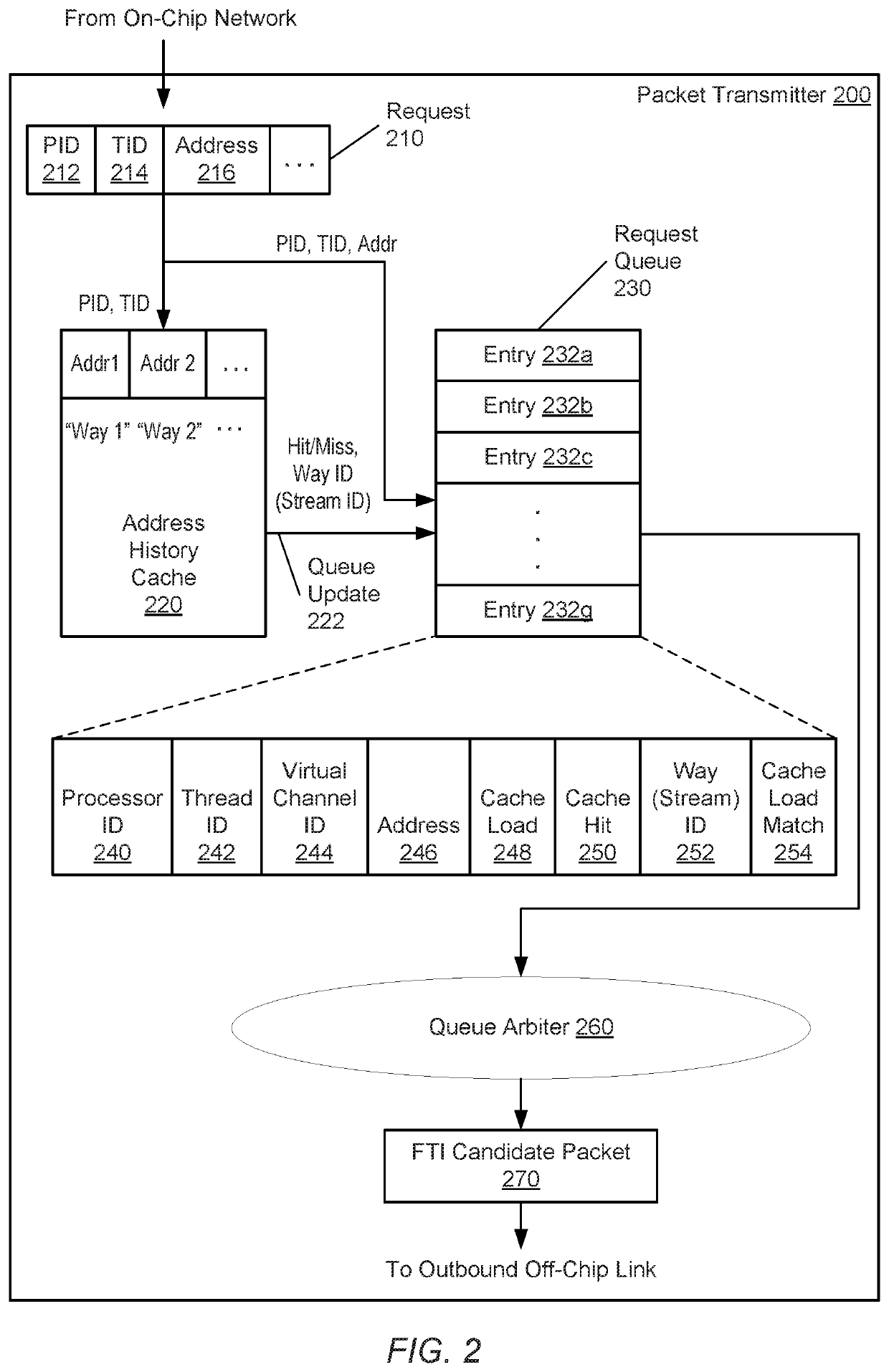Method for maintaining cache consistency during reordering
a cache consistency and reordering technology, applied in the field of reordering, can solve the problems of reducing data transfer efficiency at the boundary of the fabric, reducing the number of physical wires between processing nodes, and adding processing units coupled to a memory that do not provide the desired level of performan
- Summary
- Abstract
- Description
- Claims
- Application Information
AI Technical Summary
Benefits of technology
Problems solved by technology
Method used
Image
Examples
case 1
[0050] Entry 20 is Selected for Issue Prior to Entry 32
[0051]For case 1, the control logic 320 selects the younger request allocated in entry 20 for deallocation ahead of the older request allocated in entry 32. In such a case, the control logic 320 sends the resulting packet for the younger request allocated in entry 20 as an uncompressed packet, rather than an expected compressed packet. The control logic 320 sends the request address in the address field 246 (e.g., 0x100) in the uncompressed packet, since the receiver does not yet have the request address from the older request allocated in entry 32.
[0052]In the illustrated embodiment, the asserted value in the cache load match field 254 indicates that the control logic 320 should convert the selected younger request allocated in entry 20 from an expected compressed packet to an uncompressed packet. In a similar manner for requests allocated in entries 20 and 32, the requests allocated in entries 15 and 32 have case 1 occur for t...
case 2
[0053] Entry 8 is Selected for Issue Prior to Entries 15, 20, 32 and 43-44
[0054]For case 2, the control logic 320 selects the younger request allocated in entry 8 for deallocation ahead of one or more of the older requests allocated in entries 15, 20, 32 and 43-44. In such a case, the control logic 320 sends the packet generated for the younger request allocated in entry 8 as an expected uncompressed packet. As described earlier, the request allocated in entry 8 stores an asserted value in the cache load field 248. Therefore, the request generated a cache miss during a lookup of the local address history cache at the transmitter, and its respective address or portion of its address was loaded into the local address history cache. Although the control logic 320 created an expected uncompressed packet for the selected request allocated in entry 8, the control logic 320 performs an update for the one or more still-allocated older requests allocated in entries 15, 20, 32 and 43-44. The ...
case 3
[0057] Entry 32 is Selected for Issue First
[0058]For case 3, the control logic 320 selects the younger request allocated in entry 32 for deallocation ahead of one or more of the older requests allocated in entries 43-44 and ahead of one or more of the younger requests allocated in entries 7-8, 15 and 20. Case 3 is similar to case 2, but there are multiple younger requests from the same source and there is a younger request with an asserted value stored in the cache load field 248. For case 3, the control logic 320 sends the packet generated for the request allocated in entry 32 as an expected uncompressed packet. As described earlier, the request allocated in entry 32 stores an asserted value in the cache load field 248. Therefore, the request generated a cache miss during a lookup of the local address history cache at the transmitter, and its respective address or portion of its address was loaded into the local address history cache.
[0059]Although the control logic 320 created an ...
PUM
 Login to View More
Login to View More Abstract
Description
Claims
Application Information
 Login to View More
Login to View More - R&D
- Intellectual Property
- Life Sciences
- Materials
- Tech Scout
- Unparalleled Data Quality
- Higher Quality Content
- 60% Fewer Hallucinations
Browse by: Latest US Patents, China's latest patents, Technical Efficacy Thesaurus, Application Domain, Technology Topic, Popular Technical Reports.
© 2025 PatSnap. All rights reserved.Legal|Privacy policy|Modern Slavery Act Transparency Statement|Sitemap|About US| Contact US: help@patsnap.com



